-
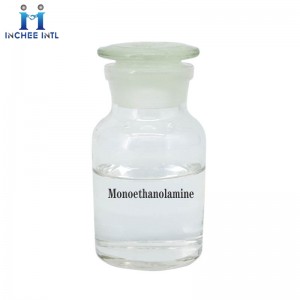
Manufacturer Good Price Monoethanolamine CAS:141-43-5
Monoethanolamine is a kind of viscous hygroscopic amino alcohol contains both amine and alcohol chemical groups. Monoethanolamine is widely distributed inside the body and is a component of lecithin. Monoethanolamine has many kinds of industrial applications. For example, Monoethanolamine can be used in the production of agricultural chemicals including ammonia as well as the manufacturing of pharmaceuticals and detergents. Monoethanolamine can also be used as a surfactant, fluorimetric reagent and removing agent of CO2 and H2S. In pharmaceutical field, ethanolamine is used as a Vascular Sclerosing agent. Monoethanolamine also has antihistaminic property, which alleviates the negative symptoms caused by H1-receptor binding.
CAS: 141-43-5
-

Manufacturer Good Price Magnesium Sulphate Heptahydrate CAS:10034-99-8
Magnesium sulfate heptahydrate (MgSO4·7H2O), also known as sulfur bitter, bitter salt, cathartic salt, Epsom salt, is a white or colorless needle or oblique columnar crystal, odorless, cool and slightly bitter, molecular weight :246.47, specific gravity 1.68, easily soluble in water, slightly soluble in ethanol and glycerol, in 67.Chemicalbook5℃ dissolved in its own crystal water. Heat decomposition, 70, 80℃ is the loss of four molecules of water of crystal. At 200℃, all crystalline water is lost to form anhydrous substance. In the air (dry) easily weathered to powder, heating gradually removed the crystal water into anhydrous magnesium sulfate, this product does not contain any toxic impurities.
CAS: 10034-99-8
-
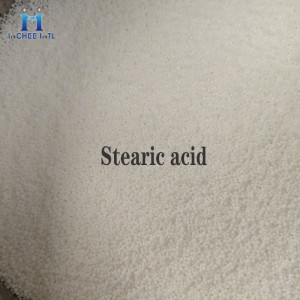
Manufacturer Good Price Stearic acid CAS:57-11-4
Stearic acid : (industrial grade) Octadecanoic acid, C18H36O2, is produced by hydrolysis of oil and is mainly used in the production of stearate
Stearic Acid-829 Stearic acid, Stearic acid is a solid fatty acid obtained from animal and vegetable fats, the main components of which are stearic acid (C18H36O2) and palmitic acid (C16H32O2).
This product is white or white like powder or crystalline hard block, its profile has microstrip luster fine needle crystal; It has a slight odor similar to grease and is tasteless. This product is soluble in chloroform or diethyl ether, dissolved in ethanol, almost insoluble in water. Freezing point The freezing point (Appendix Ⅵ D) of the product shall not be lower than 54℃. Iodine value The iodine value of this product (Appendix Ⅶ H) is not more than 4. Acid Value (Appendix Ⅶ H) of this product ranges from 203 to 210. Stearate readily reacts with magnesium and calcium ions to form magnesium stearate and calcium stearate (white precipitate)
Stearic acid CAS 57-11-4
Product Name: Stearic acidCAS: 57-11-4
-
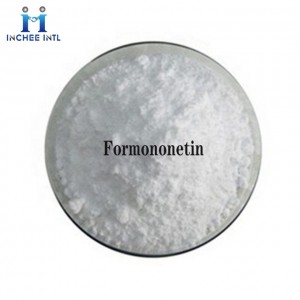
Manufacturer Good Price Formononetin CAS:485-72-3
Formononetin (485-72-3) is a naturally occurring isoflavone isolated from Astragalus and other plants. Increases adipocyte thermogenesis by modulating PPARγ activity.1.Activates AMP-activated protein kinase/β-catenin signaling to inhibit adipogenesis.2.Accelerates wound repair by increasing expression of Egr-1 transcription factor.3.Potential cancer chemopreventive and chemotherapeutic.4.Provides neuroprotection against traumatic brain injury by inhibition of neuroinflammation in a rat model.
Chemical properties: White crystal powder, soluble in methanol, ethanol, acetone, is derived from astragalus root stems. The inflorescences and flower branches and leaves of the bean -based plant red car shaft (Trifoliumpratense) are extracted from the whole grass (ononis spinosa).
CAS: 485-72-3
-

Manufacturer Good Price CalciumAlumina Cement CAS:65997-16-2
CalciumAlumina Cement is cement with calcium calcium or calcium aluminum as its main mineral component. It is made of natural aluminum or industrial alumina and calcium carbonate (limestone) according to a certain proportion, which is made by burning or electric melt.
Ingredients and categories: CalciumAlumina Cement can be divided into ordinary aluminum calcium calcium cement (al2O3 53-72%, CAO 21-35%) and pure aluminum calcium cement (al2O3 72-82%, CAO 19-23 %) Two categories. Ordinary aluminum cement cement can be divided into low -iron type (FE2O3 <2%) and high -speed rail type (Fe2O37-16%). Low -rail -type aluminum -type calcium cement can be divided into alum soil cement (Al2O353 ~ 56 %, CAO 33-35%), aluminum -60 cement (al2O359%to 61%, CAO 27-31%), and low -calcium aluminum acid cement (Al2O3 65-70%, CAO 21 to 24%). Pure aluminum calcium cement can be divided into two types: Al2O3 72-78%) and ultra -high aluminum type (Al2O3 78-85%). In addition, there are fast and hard early strong aluminum calcium cement.CAS: 65997-16-2
-
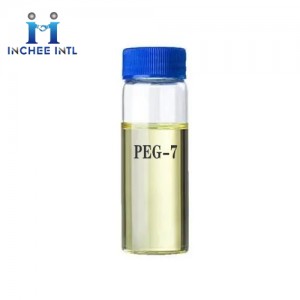
Manufacturer Good Price PEG-7 Glyceryl Cocoate CAS:68201-46-7
PEG-7 Glyceryl Cocoate is a hydrophilic moisturizing ester made of natural oil and ethylene ethylene reactions.PEG-7 Glyceryl Cocoate can be used to supplement oil and fat additives for the surface activated agent system. Sexual wool, as a soluble in transparent products, can maintain the balance of the skin and hair, reduce the sense of dryness, increase the lubrication of the skin and hair, and apply to various baths and water products.
CAS: 68201-46-7
-

Manufacturer Good Price Monoammonium Phosphate CAS:7722-76-1
Monoammonium Phosphate is a transparent, piezoelectric crystal containing no water of crystallization. Single crystals of this material were originally developed for use in underwater sound projectors and hydrophones.
Monoammonium Phosphate is a colorless transparent tetragonal crystal. soluble in water, slightly soluble in alcohol, insoluble in acetone.
Monoammonium Phosphate or monoammonium phosphate is formed when a solution of phosphoric acid is added to ammonia until the solution is distinctly acid. It crystallizes in quadratic prisms. Monoammonium Phosphate is often used in the blending of dry agricultural fertilizers. It supplies soil with the elements nitrogen and phosphorus in a form which is usable by plants. The compound is also a component of the ABC powder in some dry powder fire extinguishers.CAS: 7722-76-1
-
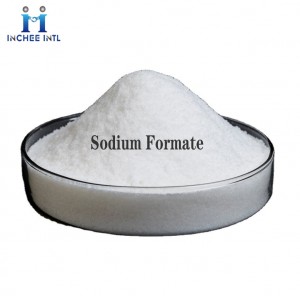
Manufacturer Good Price Sodium Formate CAS:141-53-7
Sodium formate is a white absorbent powder or crystal with a slight formic acid odor. Soluble in water and glycerin, slightly soluble in ethanol, insoluble in diethyl ether. Poisonous. Sodium formate can be used in the production of formic acid, oxalic acid, formamide and insurance powder, leather industry, chromium tanning method in the camouflage acid, used in catalyst, etc.
Sodium Formate CAS:141-53-7
Product Name: Sodium FormateCAS: 141-53-7
-

Manufacturer Good Price Hesperidin CAS:520-26-3
Hesperidin is a flavonoids, which has the structure of hydrogenoflavonoid oxyladin and is weakly acidic. Pure products are white needle crystals, which are the main components of vitamin P. After hydrogenation of orange peeling, Hesperidin is a natural sweetener dihydrogen detection. The sweetness is 1000 times that of sucrose, which can be used as functional food. Hesperidin has a variety of biological characteristics. Modern research has found that orange pepperin can antioxidant and anti -cancer, mold -proof, anti -allergic Chemicalbook, lowering blood pressure, inhibit oral cancer and esophageal cancer, maintain osmotic pressure, enhance capillary blood toughness , Reduce cholesterol and other effects. Related studies have shown that Hesperidin has a broad -spectrum inhibitory effect on common contaminated bacteria for food, and has significant inhibitory effects on Bacteria Bacteria, Rat Thalette Salmonella, Visatus, Hedar Coccus, and cholera. Therefore, it is widely used in food additives and food processing.
CAS: 520-26-3
-

Manufacturer Good Price PVB( Polyvinyl Butyral Resin) CAS:63148-65-2
Polyvinyl Butyral Resin(PVB) is a product that is contracted by polyvinyl alcohol and butadhyde under acid catalytic. Because PVB molecules contain long branches, they have good softness, low glass temperature, high stretching strength and anti -impact strength. PVB has excellent transparency, good solubility, and good light resistance, water resistance, heat resistance, cold resistance, and film formation. It contains functional groups that can perform various reactions such as acetylene -based saponification reactions, vinegarization of hydroxyl, and sulfonic acidization. It has high adhesion with glass, metal (especially aluminum) and other materials. Therefore, it has been widely used in the fields of manufacturing safety glass, adhesives, ceramic flower paper, aluminum foil paper, electrical materials, glass reinforcement products, fabric treatment agents, etc., and become an indispensable synthetic resin material.
PVB( Polyvinyl Butyral Resin) CAS:63148-65-2
Series:PVB( Polyvinyl Butyral Resin) 1A/PVB( Polyvinyl Butyral Resin) 3A/PVB( Polyvinyl Butyral Resin) 6ACAS: 63148-65-2






